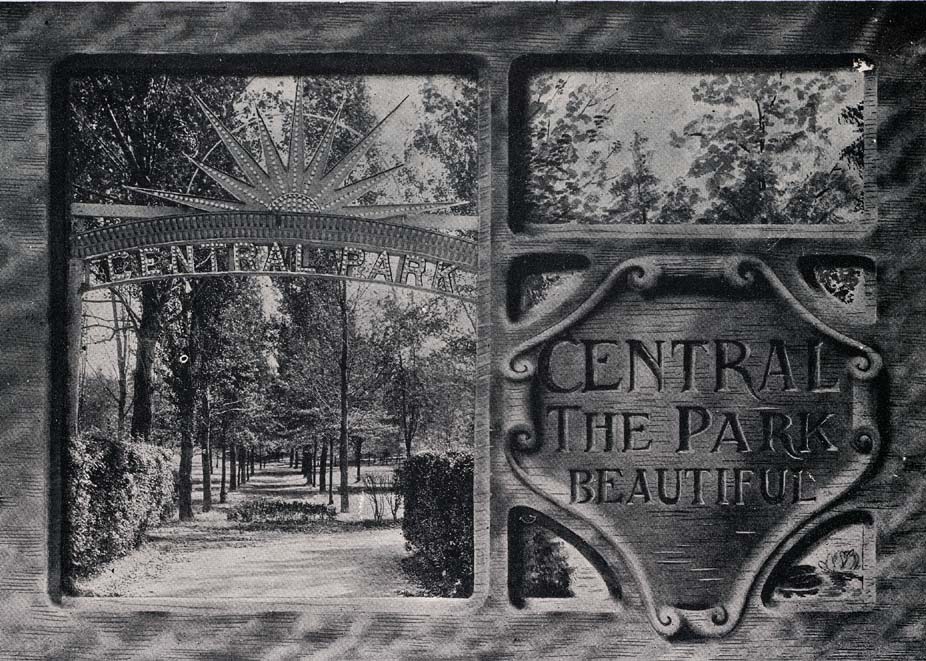
Views of Central Park
1898-1915, pg. 1 1898-1915, pg. 2 1920's - 1930's, pg. 1 1920's-1930's, pg. 2

Central Park was a "trolley park" established in the village of Rittersville, PA, on 40 acres purchased from the Thomas Ritter farm by the Allentown Bethlehem Rapid Transit Company. The park opened in July, 1893. The building of the park coincided with the transit company's inauguration of electric trolley service from Allentown to Bethlehem in August of 1891, followed by the building of a carbarn in Rittersville in May of 1892. The route of the trolley went through the village of Rittersville, which was about midway between East Allentown and Bethlehem.
"Trolley parks" were a relatively common method used by transit companies to stimulate ridership. The genesis of many amusement parks in the late 19th and early 20th centuries was brought about by the transit companies. The transit companies also were one of the primary , or even the sole source of electric power in many communities and the companies used this to their advantage to provide power for amusement park rides, as well as providing a festive atmosphere of colored lights in their parks.
Central Park started small, with a menagerie, a carousel, and picnic grounds. Across from Central Park, the transit company also built a horse-racing track. In 1896, the menagerie was closed.
Advertisement in the 1895 Allentown City Directory
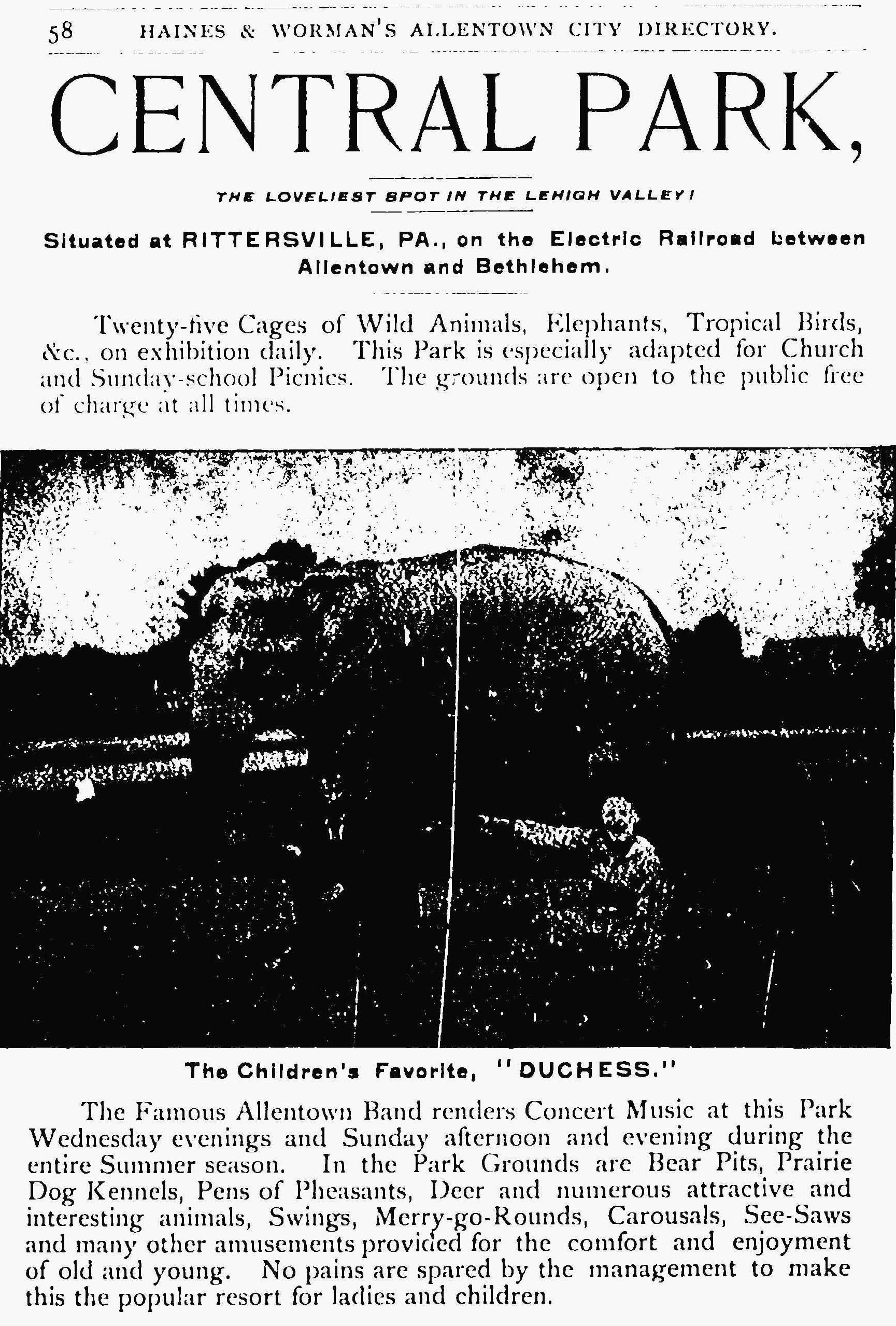
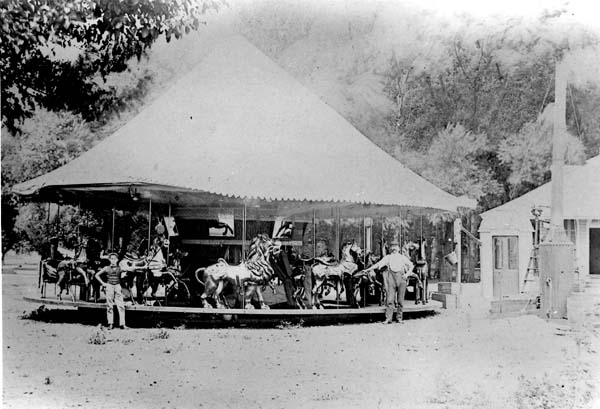
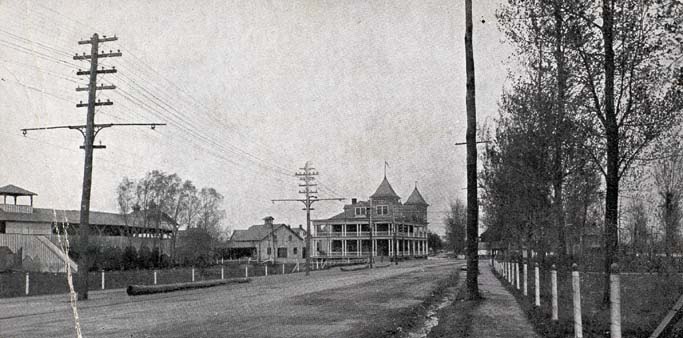
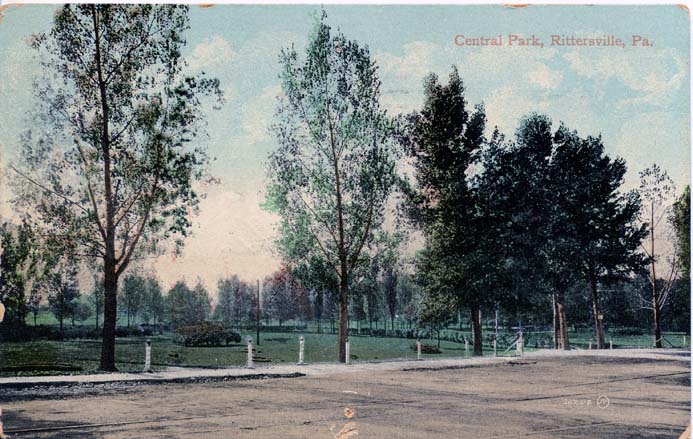
The Allentown Bethlehem Rapid Transit Company was bought out by a new owner in 1895, and the new company, the Lehigh Valley Traction Company, acquired Central Park as part of the deal. The new owners experienced financial problems, and eventually became the Lehigh Valley Transit Company in 1905. None of this seemed to affect the fortunes of Central Park, however. The park went through a tremendous expansion, so much so that attendance for the 1911 season numbered more than 650,000.
Sometime around 1914, the park's Scenic Coaster was replaced by the $50,000 Derby Racer. The Derby Racer was a double-tracked coaster with two trains of three cars each running side by side. The capacity was 36 people.
By 1915, the park had the following attractions:
|
|
|
|
|
|
|
|
|
|
|
|
|
|
|
|
|
|
|
|
|
|
|
The park continued to expand and upgrade its amusements and offered various promotions to increase attendance.
|
|
|
In 1927, the famous Cyclone roller coaster was installed at the park. In 1932, the Cyclone was rebuilt to make it a bit safer.
The bane of Central Park was fire. Seven fires hit the park over the next 20 years, and as Central Park's fortunes declined, Dorney Park's grew. Allentown's other amusement park was becoming more popular.
The first fire in the park occurred on August 16, 1932. The Olde Mill was destroyed, as were the Magic Castle, and the outdoor theater.
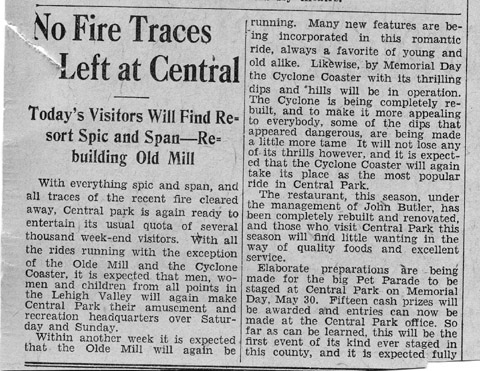
Three years later, in September of 1935, the Cyclone roller coaster burned to the ground. It was rebuilt that same year and renamed the Skyclone.
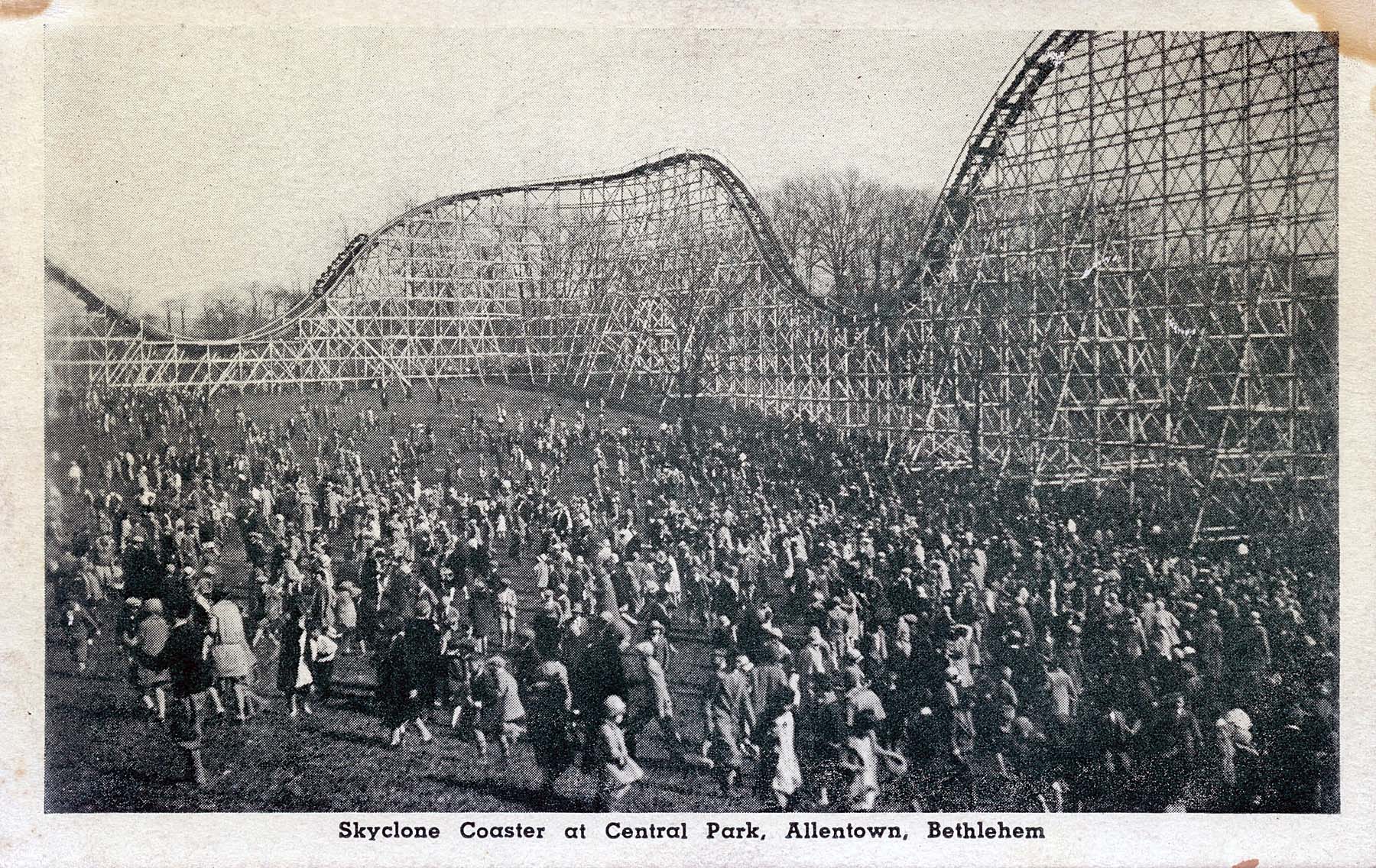
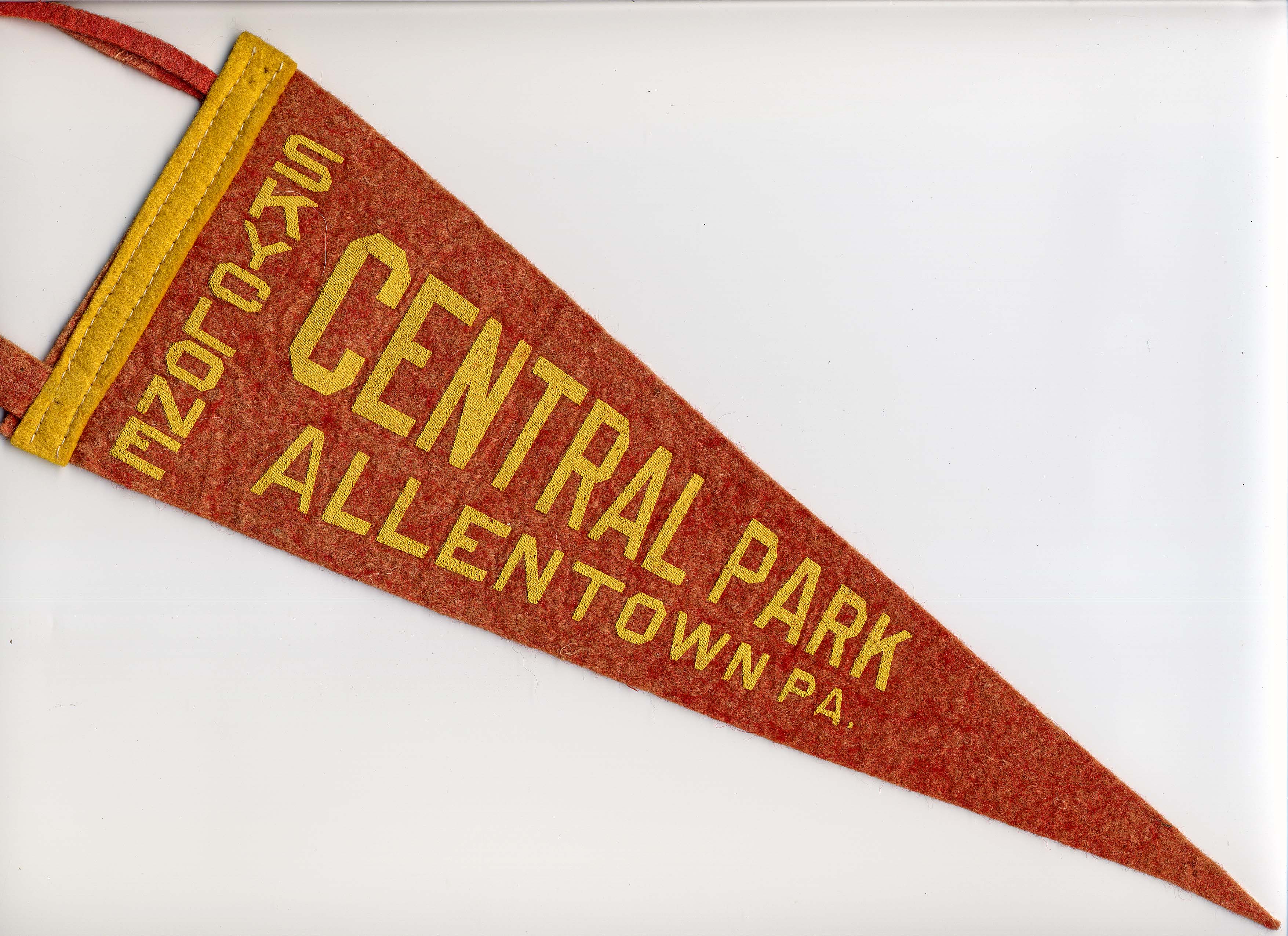
The park went without another fire until 1940. The fire in June of that year, destroyed the "Dodge 'em " ride. The next fire, ten months later, destroyed the Rainbow Room, a ballroom and skating rink. In 1944, another fire burned the bowling and billiard parlor.
Six years later, on Christmas Day of 1950, a fire was deliberately set by a disgruntled park watchman. This fire destroyed the Derby Racer and the Carousel. The final fire, in August of 1951, destroyed the theater that was rebuilt after the fire in the 1930's. This fire, too, was arson, having been set by a man who was drunk and reportedly told police he didn't know why he did it. As a kid, I lived two blocks away from the park and still remember running into the park to watch this fire.
(See the news of the seven fires as reported in the Allentown Morning Call.)
The park closed, and in December of that year, was sold for real estate development, but nothing was done with the park for many years. Some of the buildings were torn down, but a few remained through the 1950's.
As kids, we used to play in the remains of the old park. I still remember the Dodge 'em cars building still mostly intact, and at the top of the field to the east of the park stood the remains of the Sleigh Ride, a huge skeleton of a structure that overlooked the baseball field below it along Hanover Ave.
I still remember some of the light standards still standing, as well as the remnants of the fountain and the tracks for the gasoline-driven cars which ran on tracks and were styled after Jeeps following WW II, and one of my favorite rides. The concrete tiers that the theater seats once occupied were still there, covered in glass from broken beer and whiskey bottles left there by drifters, the homeless, and teenage gangs that used the park as a hangout.
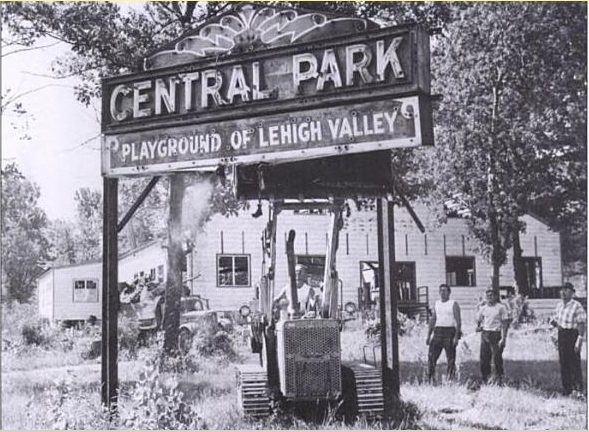
The old pump house by the entrance on Hanover Ave. was one of the last structures to be torn down. Also by the entrance was a monument to the Hanover Township residents who served in World War I. The monument was relocated to a cemetery on Airport Road, where it can be seen today.
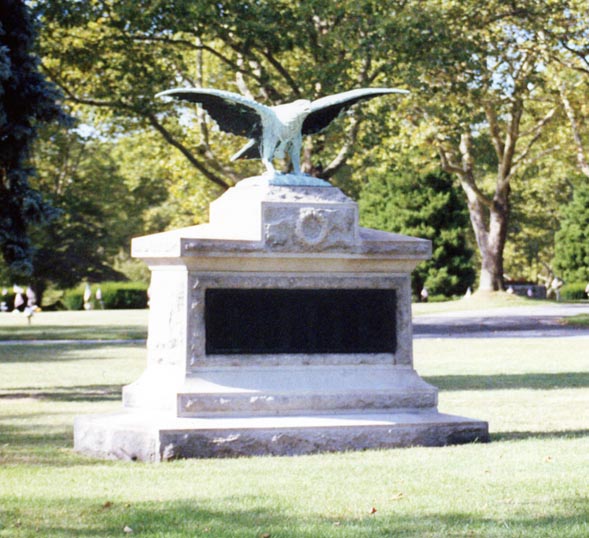
During the mid-1960's, the park land finally began to be developed. Banko Beverages was one of the first businesses to occupy the land, followed by Bennett Motors and then the Central Park nursing home, and through the following years most evidence of the park's existence was covered over. Little remains of the park today. What has not been built upon is now overgrown with brush and trees. Some footers for the rides and light standards still exist, and some treeless clearings indicate where a concourse within the park might have been. Today, the park exists only as a memory...except for one item that, believe it or not, still exists: The Central Park Carousel.

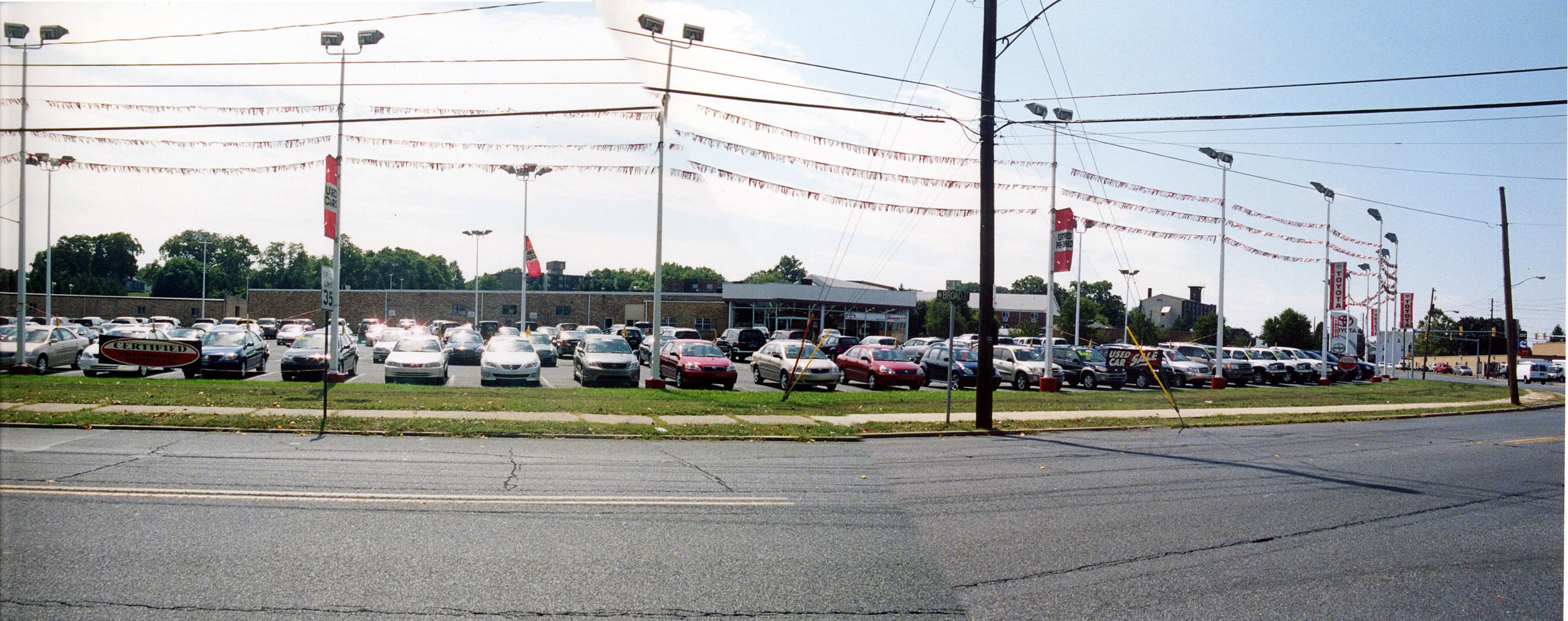
Former site of Central Park - south side of W Broad St looking west toward Hanover Ave.
© 2005, 2013 Robert M Reinbold, Jr.